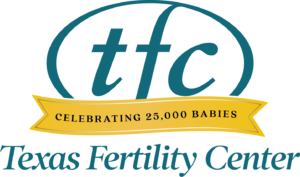It is not unusual for a couple struggling to become pregnant to hope for twins as they proceed through fertility treatments. This is especially true if the couple has not had children. Sometimes they feel that they can have two babies at one time and not need to worry about trying to become pregnant again. However, those couples who have had children in the past usually are more interested in having one baby at a time since they have experienced how much is involved in raising a child. Despite what a couple may think, it is important to realize that it is safer for the mother and her baby to have a singleton pregnancy.
Most patients appreciate that pregnancies are more complicated when a woman is carrying triplets, quadruplets or even more, but they commonly do not appreciate that a twin pregnancy can be significantly more risky than a singleton pregnancy. Risks to the mothers include an increase in miscarriage (2X), hyperemesis (morning sickness), pregnancy-induced hypertension (3X), preeclampsia, gestational diabetes, acute polyhydramnios (excessive amount of amniotic fluid), vaginal and/or uterine bleeding and hemorrhage (uncontrolled bleeding), preterm labor and delivery, prolonged hospitalization and surgical delivery (Cesarean section).
Also, a twin pregnancy is more risky for babies. The complications of the mother from carrying multiples can create complications for the babies. The maternal problems commonly result in babies being delivered prematurely. On average, the more babies that the woman is trying to carry, the earlier she will probably go into labor. Pregnant women with one baby tend to carry the pregnancy to 40 weeks, while pregnant women two babies rarely go beyond 38 weeks and tend to deliver 4-5 weeks early. Consequently, infants born from a multiple pregnancy have a greater risk of infant mortality (4-5 times higher for twins than for a singleton pregnancy) and a greater risk of mental and physical problems that can result from a premature delivery. The chance of a premature baby having cerebral palsy and other types of permanent neurological damage is significantly higher.
Also, there is a significant health care cost for premature infants. Some babies average $500,000 for their hospitalization in the neonatal intensive care unit. Traveling back and forth to the hospital during the time the baby is hospitalized creates its own challenges for the couple. All of these issues create additional stress for the new parents.
Unfortunately, to increase the chance of becoming pregnant with a fertility treatment, there is a risk of a multiple pregnancy. When utilizing in vitro fertilization, there is an opportunity to minimize this risk by limiting the number of embryos being transferred back to the woman. Our national organization, American Society of Reproductive Medicine, (ASRM) has published guidelines for the number of embryos to transfer according to the age of the woman to minimize triplets and to lower the number of twins. Not too many years ago, IVF programs averaged a triplet rate of 4-8%. The goal is to have a triplet rate of <2%.
In a spirit of trying of eliminating triplets and significantly reduce the rate of twins, our group developed criteria to help guide couples in deciding to transfer only one embryo. As laboratory procedures become more refined, many more patients can benefit by transferring only one embryo without compromising their chance of becoming pregnant.
We noted that in a select group of women that their chance of becoming pregnant was not lower by transferring one embryo instead of transferring two embryos. Couples were given the opportunity to transfer one embryo if they met the following criteria: the age of the egg <35 years, no previous unsuccessful IVF cycles, a day 5 transfer, and having at least one other embryo that met criteria for cryopreservation on the day of embryo transfer. Patients who did not choose to transfer one embryo underwent transfer of two embryos. The pregnancy rates were 68% for the single embryo group and 76% for the group transferring two embryos. These pregnancy rates were not statistically different. Therefore, young women undergoing IVF with embryo development sufficient to have at least one other embryo available for cryopreservation on the day of the embryo transfer had an excellent chance for pregnancy when they chose to transfer only one embryo.
Also, there were no multiple pregnancies in the group that chose to transfer only one embryo compared to 55% for the group transferring two embryos. And, there were three sets of triplets for the group transferring two embryos. Therefore, transferring two embryos in that group increased the risk of multiples without increasing the chance for pregnancy. This data provides the needed information for a couple to help them decide whether to transfer one or two embryos. Consequently, we recommend to the couples who meet those criteria that they transfer only one embryo. This data was so significant that this study was presented by our group last October at our annual national meeting (ASRM) in Colorado.
It is incumbent on physicians to minimize multiples when assisting couples with conceiving. Although each couple may have different fertility problems, different expectations, and different chances for success with the fertility treatments, the ultimate goal is have a safe pregnancy. Don’t hesitate to discuss ways to minimize your risk of having a multiple pregnancy with your physician.



